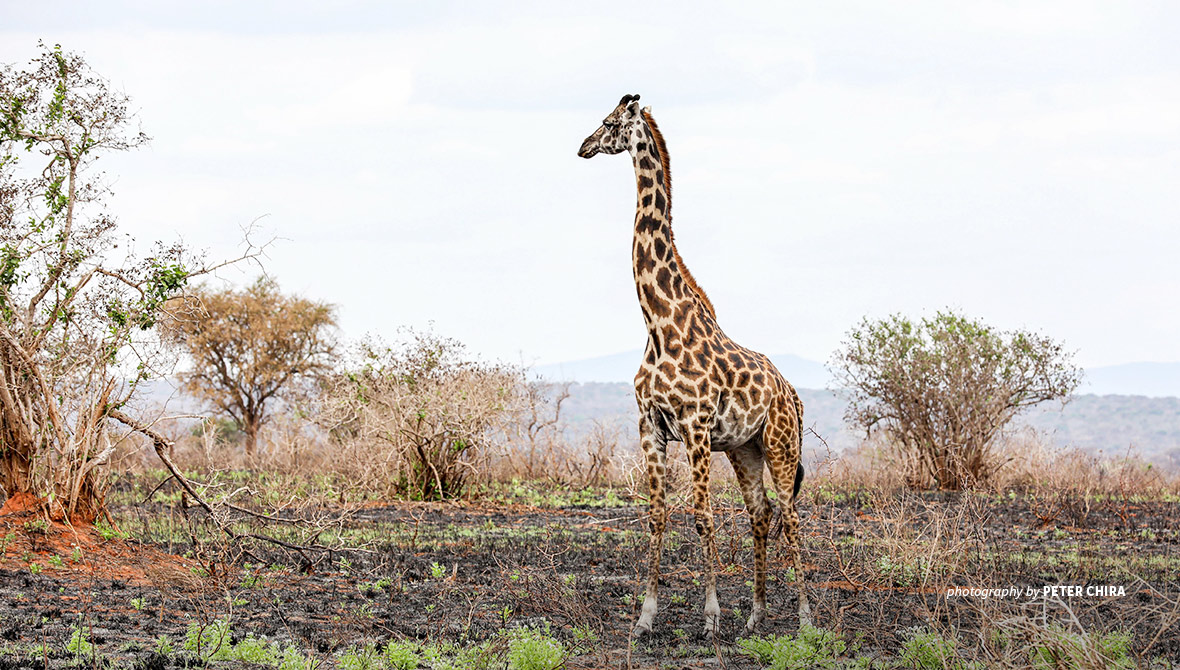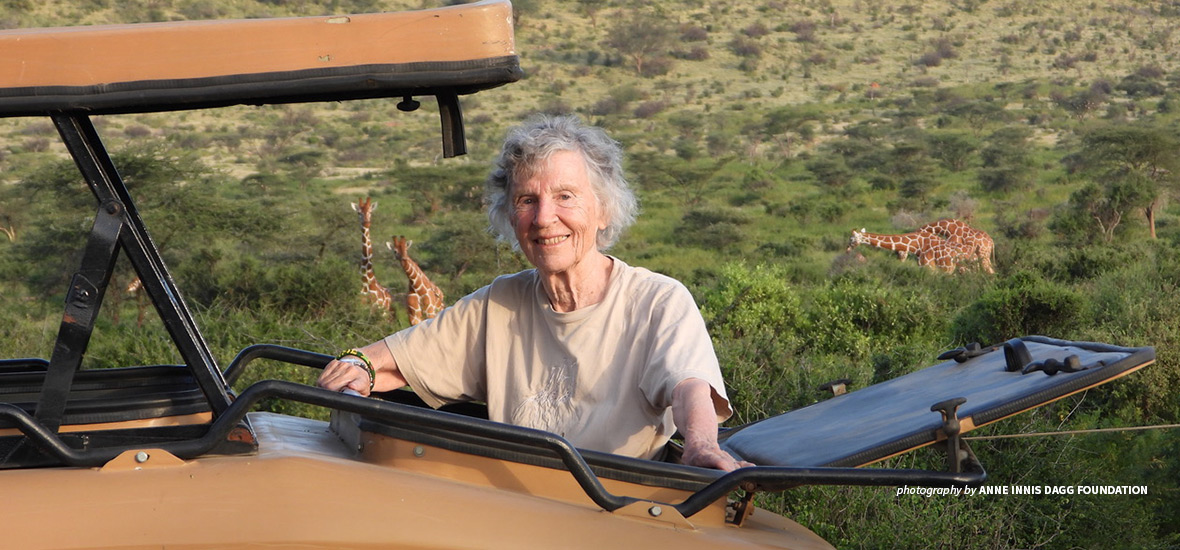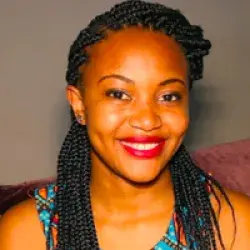World Giraffe Day: Celebrating giraffe conservation pioneers

AWF collaborates with conservation partners, national agencies, and local communities to conserve giraffes in the transboundary Tsavo-Mkomazi landscape
Every year, on June 21, the world commemorates World Giraffe Day. This day was initiated by the Giraffe Conservation Foundation in 2014 to celebrate the world’s tallest animal on the longest day or night (depending on which hemisphere you live) of the year. This anchor day is marked globally to create awareness of the challenges that giraffes face and advocate for their protection.
This majestic species is endemic to Africa and is indispensable in maintaining the ecological balance in their habitats. Giraffes are browsers — their feeding habits contribute to the health and diversity of the ecosystem they live in. As megaherbivores, they modify vegetation by feeding on shoots and seeds. Moreover, they consume a large amount of food, preventing overgrowth of vegetation and reducing plant density.
Secondly, giraffes are key seed dispersers in the ecosystems they inhabit. As they browse, they feed on seeds that pass through their digestive systems undamaged. When they move from one place to another, they disperse the seeds when they excrete. This allows for plant species to regenerate and increase vegetative cover, contributing to the resilience of ecosystems.
Additionally, giraffes are prey for large carnivores. Hyenas tend to kill young giraffes, while lions hunt mature giraffes. When they die, giraffes provide food to vultures. Lastly, this towering mammal offers surveillance to other herbivores. Smaller herbivore species like zebras often graze around giraffes as they can spot predators from a distance and flee.
What is the conservation status of giraffes?
In 2016, the International Union for Conservation of Nature (IUCN) Red List of Threatened Species listed giraffes as vulnerable. However, in 2018, the conservation status of giraffes was upgraded to ‘Endangered,’ indicating that they are in great trouble.
“The giraffes have faced a dramatic decline in population over the past few years. This is mainly caused by habitat loss, fueled by human encroachment, agricultural expansion, and deforestation. In turn, landscapes have been fragmented, preventing the free roaming of giraffes,” said Amos Muthiuru, AWF’s Project Officer, Species Conservation overseeing program activities in Kenya’s Tsavo landscape.
“Poaching is yet another threat giraffes face. The frequency of giraffe meat poaching is in part due to the fact that most of Kenya’s giraffes are found outside protected areas, on community grazing lands, which puts the animals in close proximity to people, who hunt them for protein,” added Muthiuru.
These graceful giants also contend with diseases, droughts, unpredictable rainfall patterns that impact their food sources, and electrocution from low-hanging electric lines. Addressing these threats requires urgent action. Otherwise, we risk being the generation that witnesses the extinction of the giraffe in Africa.
Celebrating giraffe conservation champions on World Giraffe Day
Dr. Anne Innis Dagg is a pioneering zoologist, biologist, animal rights activist, feminist, teacher, and mother of three. The Anne Innis Dagg (AID) Foundation was founded to raise awareness and funding for giraffe conservation initiatives within Africa by engaging local partners and their communities. Anne has received worldwide recognition for her work with giraffes, becoming not only the first Western person to study giraffe behavior in the wild but also the first Western person to study any animal behavior in the wild.
Since she was little, Anne has been passionate about giraffe conservation. It all began when she saw a giraffe at the Brookfield Zoo in Chicago. At 23, she traveled to South Africa to study giraffes in the wild, and she wondered whether there were wild regions and real habitats for wildlife. Anne became an advocate for long-term planning not only for the preservation of giraffes but also for the survival of other wildlife species. In 2018, a documentary film was made about her life called “The Woman Who Loves Giraffes.”
“We are proud to have contributed to raising funds for conservation activities for giraffes in Africa, where they live. One of the cool things we did was a fundraiser using a 14-foot giraffe that my brother built in his backyard using repurposed materials. We were able to raise over US$ 11,000. This money went into buying sniffer dogs and to train the existing dogs on identifying giraffe meat and parts. As giraffes are not endemic to Canada, connecting donors to dogs was helpful. Bridging it to dogs made a difference as people were able to relate to dogs making a difference in protecting these iconic species,” underscored Mary Dagg, Anne’s daughter and CEO of AID.
Upholding the vision of their pioneering leader has faced its share of challenges. Mary notes that Anne had to shatter many glass ceilings to chart her path as a zoologist, a male-dominated profession at that time. Additionally, fundraising for giraffes has posed a challenge, especially for a potential donor who has never been to Africa and has no personal connection to the species.

Dr. Anne Innis Dagg is renowned for her studies on giraffe behavior and continues to support giraffe conservation in Africa
“We are dedicated to continuing our advocacy work in order to secure a viable future for giraffes. Raising awareness and encouraging accountability will continue to be our key priorities. Despite the fact that we might not live close to these amazing creatures, we hope to foster a sense of ownership and understanding among people. Everyone must understand that climate change is a universal problem that affects us all,” reiterated Mary as she explained the role AID plays in ensuring the posterity of giraffes.
AID aims to inspire the next generation of conservationists through its children’s outreach program. Through this program, they have reached over 1,000 students aged between five and 15 years from 10 schools in Canada between January and April 2023. They have sensitized them on giraffes, their importance, the challenges they face, and how they can contribute to their conservation. Anne and Mary will visit Kenya, Tanzania, and South Africa in the next few weeks to retrace Anne’s original trip to Africa in 1956-1957.
Since 2021, AID has supported AWF’s giraffe conservation activities in Mkomazi in northeastern Tanzania, adjacent to Kenya’s Tsavo landscape. The transboundary region includes national parks and community conservancies, serving as a critical dispersal zone for wildlife. Apart from collaborating with Tanzanian agencies to establish the status of giraffe poaching and keep track of giraffe populations, AWF also engages community village game scouts and wildlife monitors. Community outreach is central to these initiatives, particularly among youth. With funding from AID, AWF has facilitated awareness activities at five schools, reaching over 1,600 students through essay-writing and debate competitions, as well as visits to Mkomazi National Park.
Muthiuru explained the importance of cross-boundary species protection. “It is very crucial that we integrate conservation initiatives into our development plans and protect the corridors that giraffes need to freely move and thrive. He concluded, “We should ensure that land-use practices are compatible with giraffe conservation. Such approaches will ensure that we build a future in Africa where people and wildlife thrive.”
> In honor of World Giraffe Day, read about the mystery of giraffes in Africa
